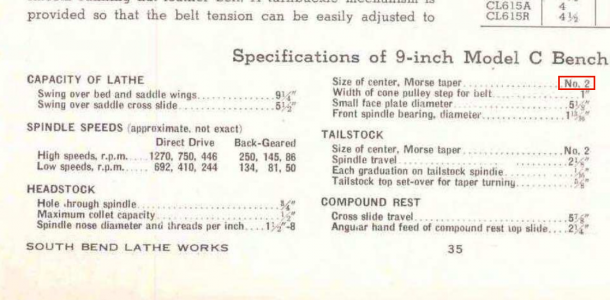- Joined
- Sep 24, 2020
- Messages
- 1,907
I am going to make a 3C collet holder and draw bar for my lathe.
It is a SB 9C.
Spindle bore is .765.
Any advice on what size black pipe to make the draw bar from and is tail stock offset the best way to cut the 3MT ?
What is a good length overall and total OD ?
Bottom left in attachment.
It is a SB 9C.
Spindle bore is .765.
Any advice on what size black pipe to make the draw bar from and is tail stock offset the best way to cut the 3MT ?
What is a good length overall and total OD ?
Bottom left in attachment.


